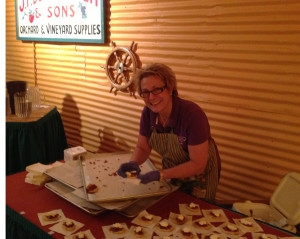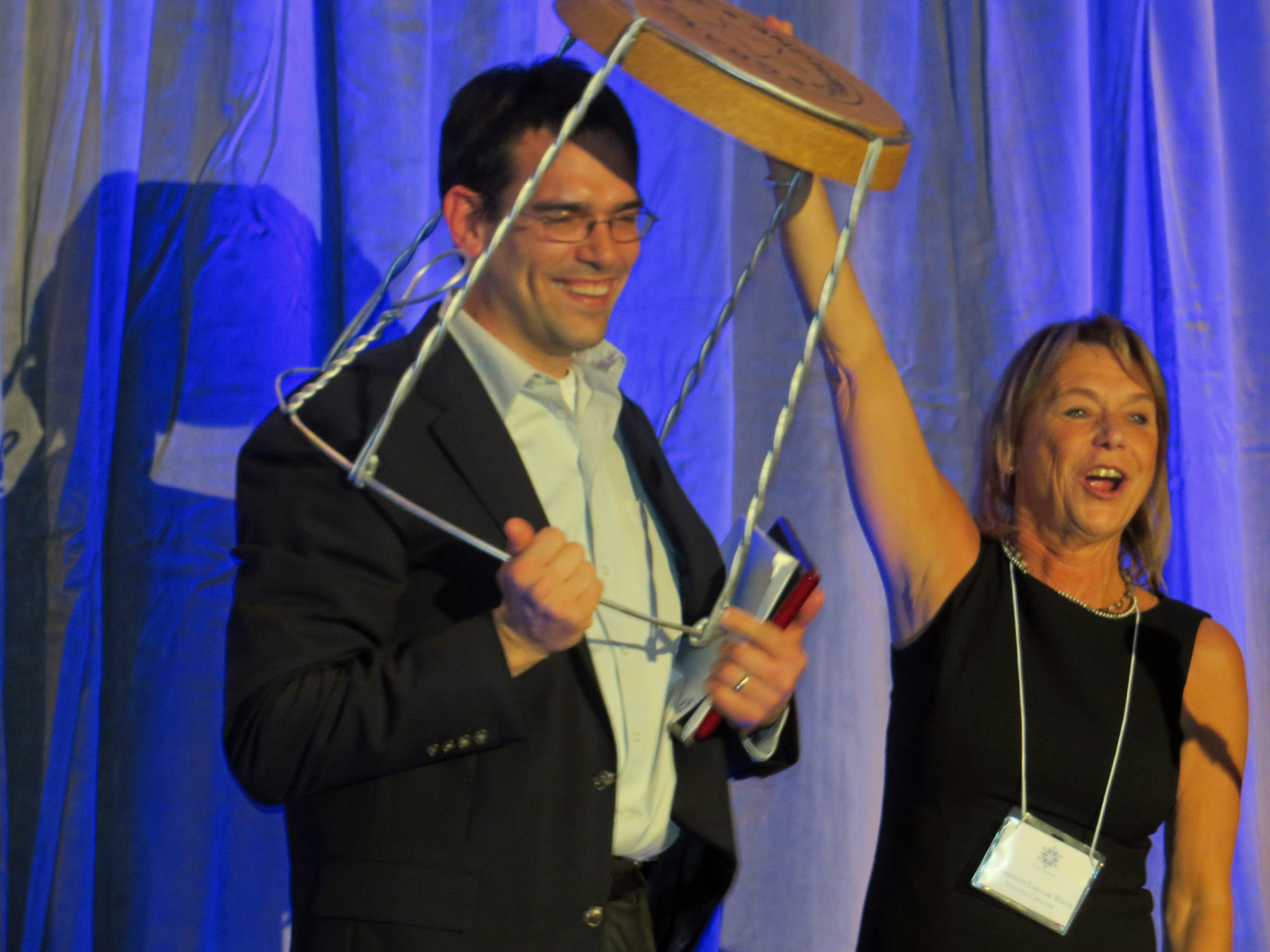Ohio Ice Wine Festival Draws Thousands
For Ohio wine fans who like a bit of sweetness, the Grand River Ice Wine Festival is more than a progressive tasting–it’s an annual celebration. This year’s fest marked the 10th annual tribute to the frozen grape, and the event drew close to 3,000 ‘ice wine groupies” from across Ohio and neighboring states over three cold, but snow free, weekends during March 2013.
See related story: 2014 Ohio Ice Wine Festival
Five northeastern Ohio wineries, all within a 10-minute drive of each other, band together each year to sponsor and market the festival: Debonné Vineyards, Ferrante Winery & Ristorante, Grand River Cellars Winery & Restaurant, Laurello Vineyards and St. Joseph Vineyards. Attendees are encouraged to visit all five, sampling each winery’s ice wines and signature appetizers as they progress from one winery to the next. Several of the wineries also offer tastings of their other wines.
Vidal Blanc is the grape of choice for Ohio ice wine. ‘One year we picked Cabernet Franc in the winter, but the juice wasn’t good enough for making ice wine,” says Cindy Lindberg, president of Grand River Cellars in Madison, whose ice wine has 19.5 percent residual sugar.
Kimberly Laurello, owner of Laurello Vineyards in nearby Geneva, agrees. ‘If the grapes can hang long enough, we like to make some ice wine from Cabernet Franc, but Vidal Blanc is more reliable,” she says.
The ice wines showcased at the Ice Wine Festival are all authentic ice wines instead of cryogenically frozen “iced” wines. Making true ice wine is difficult and risky. Grapes remain on the vines for months after the harvest ends, waiting for cold weather to set in. The grapes are only picked when they are frozen solid and the temperature reaches 17 degrees or colder; then they are pressed immediately before they can begin to thaw.
For the 2011 vintage, Laurello Vineyards picked their Vidal Blanc grapes on December 17. Those grapes would eventually become ‘Sweet Genevieve” ice wine, named after Kimberly Laurello’s mother, with residual sugar of less than 17 percent. Of the three wines we tasted, Laurello’s was the driest, with hints of pecans and raisins. ‘I don’t like very sweet wines,” Kimberly explains. ‘I like some acid in there, to balance the fruit and sweetness. It’s a fine line, but it’s in honor of my mother so I want it to be the best it possibly can be.”
At Laurello’s tasting, visitors also sampled their 2011 ‘Illuminata,” a floral-tasting, still wine blend of Gewurztraminer, Riesling and Muscat, named after Kimberly’s grandmother.
Grand River Cellars started picking the Vidal Blanc grapes for their ice wine at about 10 p.m. on January 2nd and finished early the next morning. ‘Our vineyard manager watches the weather and tries to predict when the grapes will be frozen,” Cindy Lindberg says. ‘He’ll tell us, `Looks like we’ll be picking in two days.’ Sometimes it’s a very small window.”
Like most Grand River Wineries, Grand River uses the exacting Canadian Vintners Quality Alliance standards for ice wine. The grapes must be frozen on the vines and harvested at a maximum temperature of -10 celsius. As soon as conditions are perfect, a call goes out to Cindy’s corps of volunteer pickers who venture out into the sub-freezing cold, usually in the dark, to pick ice-wine grapes each year.
See related story: Minnesota Winemakers Mastering Ice Wines
See related story: Lemon Creek’s Michigan Cab Sauv Ice Wine
Ferrante Winery & Ristorante was the last of the group to pick their Vidal Blanc grapes this year. ‘We waited until January 24,” says the winery’s Jim Arbaczewski, so it would have the highest sugar content possible.” However, he adds, allowing the grapes to hang for so long has its down side: ‘We lost a lot to animals and rot.”
Ferrante’s ice wine is surprisingly dry on the palate for its high residual sugar content–about 19 percent–and leaves a crisp, fruity finish.
Ferrante, too, was pouring the 2011 vintage; because the 2012 yield was so small, Arbaczewski said they might have to boost prices slightly on ice wines sold at the winery, but no more than a dollar. ‘ And we won’t increase the retail price,” he adds. ‘It’s too much of a hassle to change prices with the big supermarkets; you have to deal with their headquarters in other states, then go through more offices here in Ohio–it’s really not worth the trouble.”
Grand River ice wines sell in the $27-$30 range retail, an attractive price for a scarce, artisan product. Ferrante produced just 400 gallons of ice wine in 2012, compared to 680 gallons of the 2011 vintage. Grand River Cellars produced less in 2012 as well–500 gallons, compared to 800 gallons in 2011, “but the numbers have nothing to do with the harvest,” Cindy Lindberg says. “It is all based on need. We determine and project how much ice wine we will need for the coming year and then mark off the rows of vines needed for that number.”
But the real genius of the event happens in the marketing strategy. All of the wineries participating in the ice wine festival are small, family-owned operations. None of them could effectively market the festival on their own.
So, the five formed an association to collectively market not only the ice wine festival, but other joint events throughout the year. ‘We meet four or five times a year, and `talk’ a lot by email,” Cindy Lindberg says. ‘”We’re trying to make this area a wine destination, and working together gives us a framework that’s fairly unique in Ohio.”
Kimberly Laurello agrees: ‘Not only is it more effective to collaborate,” she says, ‘it’s more economical.” Partnering with their neighbors also makes it financially feasible to add extras, such as ice carving, dog sledding and food artisans, that can draw even more festival goers.





